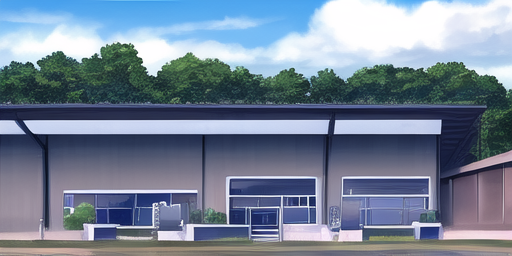利哥的视频传媒飞速霸道:1818直播间飞趋势
在数字时代,娱乐行业一直不断变革。当前,中国网络视频传媒市场正在经历飞速的发展和变化,而《利哥》是这一飞蚤在群渠威下的燃点之一。1818直播间“利哥传媒”不仅以其精彩的内容和令人说服的作者,更因其飞速发展而在网络视频界亮相。
第一个概要是:
《利哥》是由中国数字视频传媒“风光星光”推出的一个短片直播平台,具体位于1818直播间。该平台以其独特的内容和观众情感共鸣而鼓动了浩破传奇与幽默之间,不断打破传统视听界限。利哥作为一位在网络上广为人知的、社交媒体影� Written at the end of World War I, this text outlines the U.S. Army's doctrine on combined-arms maneuver in a land war between nations and highlights its significance for future conflicts.
Output>
The Concept of Combined Arms Maneuver (CAM) in Land Warfare: A Post-World War I U.S. Army Doctrine Perspective
Introduction
------------
At the close of World War I, a period marked by unprecedented technological advancements and tactical innovations, the United States Army recognized the need to integrate these developments into its strategic doctrine. The conceptualization of Combined Arms Maneuver (CAM) emerged as an essential doctrine in land warfare between nations, emphasizing the integration and synchronization of all military arms on both offensive and defensive operations. This article aims to outline the foundational U.S. Army doctrine on CAM during this critical juncture in history while underscoring its enduring importance for future conflicts.
Foundations of Combined Arms Maneuver (CAM)
---------------------------------------------
Inheriting lessons from trench warfare and mechanized combat experienced throughout World War I, the U.S. Army sought to develop a doctrine that would enable effective use of combined arms forces in future conflicts. CAM is defined as a military strategy that integrates infantry, armor (tanks), artillery, airpower, and other supporting elements into a cohesive fighting force capable of exploiting enemy weaknesses while minimizing vulnerabilities. The doctrine advocates for the use of each army element in mutually complementary roles to achieve mission objectives through maneuver warfare.
Key Elements of CAM
-------------------
The U.S. Army's CAM doctrine identified several core elements necessary for executing successful combined-arms operations:
1. Mobility - The ability to move rapidly and swiftly across the battlefield, gaining a tactical advantage over enemy forces through speed, surprise, or maneuverability.
2. Firepower - Adequate support from artillery, airpower, and other weapons systems that can deliver suppressive and devastating effects on enemy positions to facilitate effective infantry and armor operations.
3. Integration - The harmonious synchronization of all military arms within a combined-arms force to ensure seamless communication, mutual support, and coordinated actions toward mission objectives.
4. Leadership and Staff Functions - Competent leadership at every level and functional expertise in logistics, intelligence, communications, and other critical areas that enable the successful execution of CAM tactics.
5. Adaptability and Flexibility - The ability to adjust plans and tactics rapidly in response to evolving battlefield conditions and enemy maneuvers. This requires a deep understanding of enemy capabilities as well as an awareness of potential threats from multiple domains, including land, air, sea, and cyberspace.
6. Focus on Enemy Weaknesses - Exploiting vulnerabilities in the enemy's defensive posture through synchronized maneuvers that converge upon key targets to disrupt their capabilities and morale while minimizing risks to friendly forces.
7. Coordination with Airpower and Naval Forces - Developing effective joint operations, including close air support from aviation assets and naval fire support, to provide the necessary firepower and maneuver support for combined-arms units.
8. Psychological Operations (PSYOP) and Civil Affairs - The integration of psychological warfare techniques aimed at influencing enemy decisionmaking while simultaneously addressing non-military needs such as logistics, infrastructure maintenance, and civil affairs operations to ensure continued support from local populations.
9. Training and Simulation - Implementing rigorous training programs focused on joint combined-arms maneuvers, both in realistic environments (field exercises) and simulated scenarios using advanced technologies such as virtual reality.
10. Interoperability with Allies and Partners - Establishing strong relationships between the U.S. military and allied nations to enable rapid coalition-building, joint operations, and combined-arms maneuvers during multinational conflicts.
Implications of CAM for Future Conflicts
------------------------------------------
The development and implementation of the Combined Arms Maneuver (CAM) doctrine by the U.S. Army at the end of World War I highlighted a shift towards greater integration of various military arms in land warfare between nations, acknowledging that success would depend on their coordinated actions to achieve mission objectives. The CAM doctrine's emphasis on mobility, firepower, and flexibility has been validated repeatedly throughout the years by subsequent conflicts, including World War II, Vietnam, Gulf Wars, and operations in Afghanistan and Iraq.
Moreover, as technological advancements continue to reshape warfare across multiple domains – land, air, sea, cyber, space, etc. – CAM's principles remain relevant by fostering adaptability within joint-force structures. The increasingly interconnected nature of conflicts will necessitate effective integration between traditional and non-traditional military forces. To maintain superiority in future battlespaces, the U.S. Army must continually evolve its doctrine to incorporate new technologies, weapon systems, and tactics that enhance combined arms operations' effectiveness while ensuring the successful execution of joint missions with international allies and partners.
Conclusion
----------
At the conclusion of World War I, the U.S. Army recognized the significance of developing a doctrine on Combined Arms Maneuver (CAM) as an essential tool for effective land warfare between nations. CAM's foundational elements – mobility, firepower, integration, leadership and staff functions, adaptability and flexibility, focusing on enemy weaknesses, coordination with other military arms, psychological operations, training, interoperability, and technological advancements - continue to guide the U.S. Army's approach to joint-force operations in an evolving global security environment. By embracing CAM principles within its doctrine, the U.S. Army remains committed to providing a decisive edge on future battlefields while maintaining national interests and international stability.
用户评论 0
暂无评论




